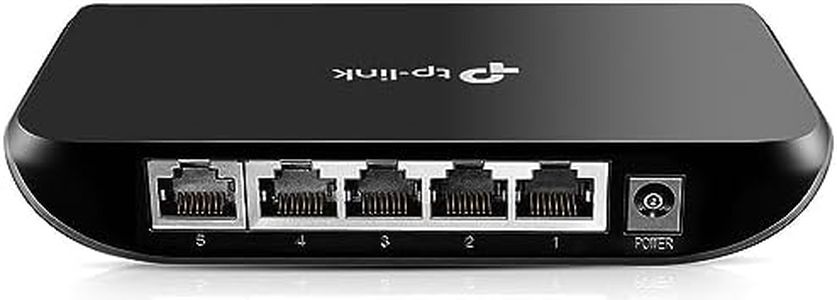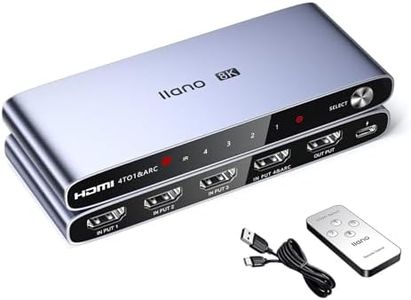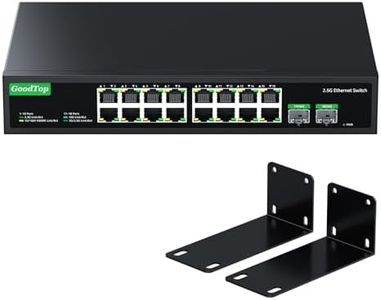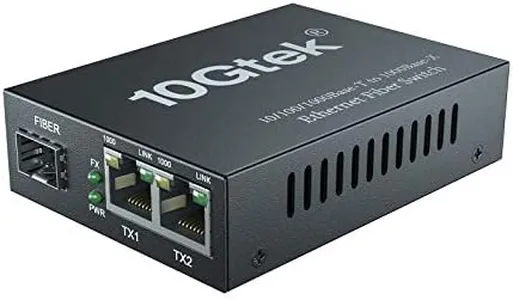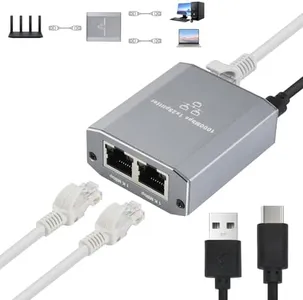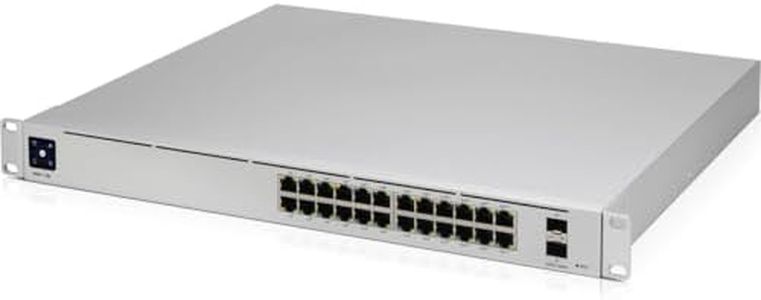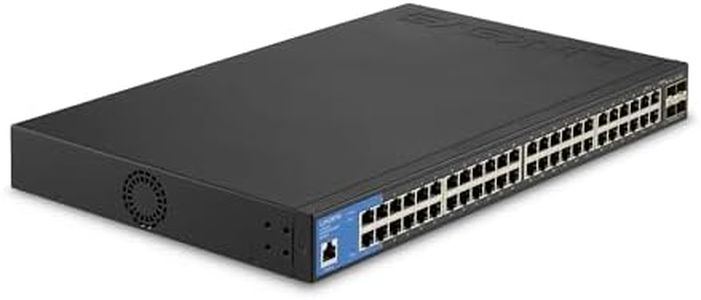10 Best Gigabit Switches 2025 in the United States
Our technology thoroughly searches through the online shopping world, reviewing hundreds of sites. We then process and analyze this information, updating in real-time to bring you the latest top-rated products. This way, you always get the best and most current options available.

Our Top Picks
Winner
TP-Link 5 Port Gigabit Ethernet Network Switch | Plug and Play | Desktop or Wall-Mount | Plastic Case Ethernet Splitter | Fanless | Traffic Optimization | Unmanaged (TL-SG1005D)
Most important from
30692 reviews
The TP-Link TL-SG1005D is a small, unmanaged gigabit switch with 5 Ethernet ports, making it a solid choice for home or small office users who need to add more wired devices like laptops, gaming consoles, or printers. Its plug-and-play design means you can start using it instantly without any setup or software, which is great if you want simplicity and reliability. The switch supports gigabit speeds (up to 1000 Mbps) on all ports, so it can handle fast data transfers and improve network performance compared to older 100 Mbps switches.
It is fanless and compact, which keeps it quiet and easy to place on a desk or mount on a wall. This model does not support PoE (Power over Ethernet), so it won't power devices like IP cameras or phones directly through the switch. Being unmanaged, it doesn’t offer advanced controls or customization, which may limit its use in larger or more complex networks. The device is energy efficient, automatically adjusting power use depending on connected devices and cable length to save energy. While its plastic build keeps it lightweight, it is durable enough for typical home or office use.
If you want a no-fuss, cost-effective way to expand your wired connections with gigabit speed and don’t need advanced features or PoE, this switch meets those needs well.
Most important from
30692 reviews
HP JL322A Aruba 2930M 48G POE+ 1-Slot - Switch - L3 - managed - 44 x 10/100/1000 (PoE+) + 4 x combo Gigabit SFP - rack-mountable - PoE+ (1440 W) -
The HPE 2930M 48G POE+ 1-SLOT L3 is a powerful gigabit switch that is well-suited for enterprise or large-scale network environments. One of its strengths is the large number of ports, offering 44 connections, which is ideal for extensive network setups. As a managed switch, it provides advanced features for network management, including Layer 3 capabilities, which can help optimize network performance and security.
The PoE (Power over Ethernet) support is another advantage, allowing the switch to power devices such as IP phones and cameras directly through the Ethernet cables, simplifying installation and reducing the need for separate power supplies. However, it's important to note that the power supply (JL086A) is sold separately, which might be an additional cost to consider. The switch has a solid metal case, which ensures durability.
Its energy efficiency might not be on the cutting edge, given the maximum power rating of 1440 Watts, but it's a fair trade-off for its high performance. The form factor is rack-mounted, which is typical for enterprise networking equipment but may not be suitable for smaller setups. The device is relatively heavy, weighing 16.02 pounds, and the package dimensions indicate it will require adequate space for installation. Given its robust features and capabilities, this switch is a good fit for businesses looking to manage and scale their network efficiently, though it may be overkill for home or small office use.
Cisco Catalyst 9200 C9200L-48T-4G Layer 3 Switch - 48 X Gigabit Ethernet Network, 4 X Gigabit Ethernet Uplink - Manageable - Twisted Pair, Optical Fiber - Modular - 3 Layer Supported
The CISCO Catalyst 9200 C9200L-48T-4G Layer 3 Switch is a high-performing gigabit switch designed with 48 Gigabit Ethernet ports and 4 uplink ports, making it suitable for large networks where numerous devices need to be connected. Being a managed switch, it offers advanced network management capabilities, which is ideal for businesses that require control over their network settings and security. Additionally, the switch supports Layer 3 functionality, which includes routing capabilities, enhancing its utility in more complex network environments.
However, it lacks Power over Ethernet (PoE) support, which could be a limitation if you need to power devices like IP cameras or phones through the network cables. The modular design and stack port feature add to its flexibility and scalability, allowing for future expansions and easy integration into larger networks. In terms of form factor, it is relatively compact, though at 4.35 kilograms, it is not the lightest option available.
With a solid build from a reputable brand like Cisco, this switch is well-suited for enterprise environments that demand robust performance, detailed management, and reliability, though it may be overkill for small businesses or home use.
Buying Guide for the Best Gigabit Switches
When choosing a gigabit switch, it's important to understand the key specifications and how they align with your needs. A gigabit switch is a device that connects multiple devices on a local area network (LAN) and allows them to communicate at high speeds. These switches are essential for managing network traffic efficiently, especially in environments with high data transfer requirements. To make an informed decision, consider the following key specifications and how they impact performance and usability.FAQ
Most Popular Categories Right Now
